As voice-first devices and virtual assistants become more prevalent, companies are left to figure out how to control the content needed for voice user interfaces (VUI). Yet typical CMS applications are not equipped with the attributes needed to showcase engaging, personalized, and situationally aware voice experiences. Still, a headless CMS is the perfect answer because it is headless and allows for better creation, management, and distribution of voice content across all voice-enabled applications.
What VUI Requires From a Voice Content Manager That Others Don’t
Voice content is different from text or image content. VUI managers will have to take into account the elements of conversational exchange, the difference between how language tends to be spoken versus written, and how users interact (and react) in the moment. Teams exploring Contentful alternatives might particularly benefit from a headless CMS, as it gives your content team the ability to hone in on voice content management without development limitations, allowing your team to create word-for-word dedicated content to be spoken, with the inflections, pauses, and pacing required to encourage realistic and fluid voice-first experiences.
The Headless CMS Architecture Advantages for VUI Delivery
A headless CMS is literally headless; it severs the presentation layer from the backend where content is developed and stored. This decoupled design not only offers fewer barriers to assembling and managing voice-oriented content by giving you a dedicated place to manage voice, but it allows for ease of access. An API-driven approach allows for real-time delivery of voice content to any voice platform, from smart home devices to vehicles and more, efficiently updating across platforms with minimal manual input.
Content Models Built Specifically for Voice-Led Experiences
VUI requires its own type of content/canvas structure. As such, dedicated content models need to be built to ensure effective voice-led experiences. With a headless CMS, your content team can create models that are specifically applicable to VUI controls, from script dialogue for conversational interactions to branching paths based on in-the-moment prompts/responses. The better the structure is for voice, the more your audience will interact as you intend, enjoying seamless conversations as they work with and receive voice-first content.
API Connectivity for Simple Integration of Voice Content
APIs are the connectors through which headless CMSs communicate with voice interface systems. Through API connections, the content housed in a headless CMS can be extracted and sent directly to voice-driven assistants, smart devices, and interactive voice response (IVR) systems. Such integrations ease the process of launching content, enable real-time changes to content, and ensure that voice-driven applications can respond to inquiries more accurately and in a personalized fashion to meet end-users’ needs.
Transparent Brand Consistency With Voice Content Solutions
Voice content should embody a trustworthy brand persona that’s recognizable and consistent with branded visual content. Using a headless CMS centralizes content control so that editors know where to go for compounded adjustments that need to be made with tone, vocabulary, and messaging in visual vs. audio platforms. Authoritative workflows and consolidated content management bolster editorial responsibility, brand persona, and ensure that customer-facing voices are credible, recognizable, and cohesive for the users.
Customization From a Headless CMS for VUI
Customization is critical for engagement in voice-user interfaces, too. A headless CMS provides customized voice engagement capabilities and dynamic content flows that allow for specific voice responses for specific users or generalized audiences. This means that specifics about users data from past engagements, their preferences can be taken from other organizational repositories and editorialized to create a more powerful, relevant, and situationally aware response through an API. Enhanced customization promotes user engagement; it strengthens bonds with customers and vastly improves customer satisfaction when it comes to voice-enabled responses.
Improved Editorial Workflow for Voice Production
Editorial workflow is improved with a headless CMS for voice production because the interface is more intuitive, content can be programmed to update automatically, and collaborative opportunities can be integrated through middleware designed specifically for voice content. For example, editors can easily create, test, and edit voice conversations in one central, easy-to-use space. In addition, automation eliminates the need for manual intervention with many voice resources, allowing for consistent and agile updates. This is important because editorial teams may have to sift through large amounts of conversational content, and a headless CMS provides these improvements with minimal fuss or downtime.
Content Performance Analytics for Voice Improvements
Voice content performance analytics is easier with a headless CMS because integration with various tools facilitates measurement of success. Whether it be assessing how often users access voice content or how well exchanges work, the ability to assess performance data lets editorial teams grasp how users interact with voice experiences. This, in turn, allows for response data to improve voices in the long term or even improve conversational flows to make them more appropriate and accurate for better experiences.
Better Multichannel Consistency for Voice and Other Experiences
Multichannel content is easier to manage with a headless CMS relative to voices and other resources because it can ensure consistent messaging and user experiences. Content can be created in one centralized location for data retrieval, and a headless CMS means less duplication and more opportunities for avoiding inconsistencies. If there’s something that needs to be changed across channels, it’s easier and more effective to change it in one place than to manage multiple versions of the same content over time. This ensures quality content becomes dependable and offers seamless user experiences, whether using a voice, mobile, or web version of the offering.
Headless CMS Training and Resources that Support Editors
Headless CMS provides training and resources that support editors when creating and managing voice content and properly managing it within these systems. For example, training helps articulate the difference between regular text and voice-based text, the intentions of conversational design, and how to navigate the CMS for successful outcomes. When editors understand how to translate real-life lessons into a headless CMS, they feel empowered to apply voice design, manage operations with voice-based content effectively, and ensure all voice assets are timely, successful, user-friendly, and competent for strategic organizational goals.
Content Created with Intention for Accessibility with Voice
One of the most tangible yet often overlooked aspects of headless content management systems is the focus on accessibility regarding headless content. Voice is inherently accessible especially to people with disabilities or those who do not have the opportunity to use their hands. A headless CMS helps editors locate and place voice-based content for accessible use as it organizes information and bolsters findings based on voice. That means via voice; it’s easier to understand, easier to use, and more valuable for people wanting to get the information they need, fast. Ultimately, accessible content expands audience reach, creates equity, ensures effective use, and positions organizations as responsible champions of accessibility efforts.
Digital Architecture that Supports Scalability for Voice Content Management
The structure of a headless CMS directly supports scalability regarding voice content management. Since voice is another type of interface related to different contexts and applications, the more scalable organizations can be in assessing future endeavors with multiple types of voice use cases and implementation, the better. A headless CMS allows for the scaling of content operations to fulfill growing needs for greater interaction, broader use cases, larger conversational exchanges, etc., without failing to operate successfully. When organizations can scale efficiently, they take advantage of time-sensitive opportunities, making innovation a worthwhile confidence-driven initiative while improving the overall sustainability of digital transformation in the long run.
Ethical Voice Content Delivery and AI Use
The importance of ethics in voice content and their delivery, as well as AI use, is paramount for continued trust and enterprise integrity. This means that the use and delivery of voice access and AI transactions should not only be transparent, but any data collection and engagement, and in-depth use, should be acknowledged, not hidden behind a predictive algorithm. Therefore, ethically delivering such use and transactions protects the impervious nature of private collections, builds trust, and emphasizes an ethical structure of the enterprise for proper audience trust and enterprise responsibility.
Editorial Achievements and ROI from Voice Content Management in a Headless CMS
Should effective management of voice content in a headless CMS prove to render editorial achievements through effective voice content integration that boasts efficiency beyond anticipated management elsewhere, this will be helpful to pitch to other forward-thinking enterprises. Should performance improve, satisfaction of usability, or other forms of ROI be tracked through analytics over time and communicated to the rest of the company network, it will promote sustained adherence to expectations and raise awareness of innovative practices yet to come. In addition, boasting of editorial achievements fosters team cohesion, legitimizes investment efforts made, and ensures great excitement about what attributes management/division can do in a headless CMS.
How a Headless CMS Will Future-Proof Your Voice Interface Strategy
A headless CMS will future-proof a voice interface strategy because if at any time new abilities arise from different channels or other vetted voice opportunities, APIs allow for more loosely coupled approaches to its headless construction, which means other technological trends can be easily adopted without taking steps backward from an enterprise that wasn’t as up to date. Instead, enterprises can pivot in real-time while still maintaining UX consistency.
Less Friction & Better Conversational Experience via Structured Conversational Content Management
Less friction and a better conversational experience are facilitated by a headless CMS via intentional structured content management. For example, the content models created for various conversational opportunities allow the editorial team to understand the pathways of conversation easily, determine potential responses and adjustments quickly if need be because it was all so clearly defined from the start. The more structured the conversation, the more natural the experience will be for users without annoying bumps in the road and unnecessary dead ends. Therefore, leveraging a headless CMS for voice experiences goes a long way to making them sound and feel more effective, creating user satisfaction and subsequent engagement.
Decreased Time-to-Market via Human Headless VUI Content Management System
The human headless VUI content management system decreases time-to-market drastically because it renders everything an organization needs to release their projects all in one place. For example, through APIs, elements of the headless CMS can come into play without extensive testing because the channels are already working seamlessly through the branded project association. Therefore, time spent creating duplicate elements across different branches of a voice interaction is minimized and instead, applied to fine-tuning the elements that truly matter for time-sensitive release. Companies can capitalize on opportunities while they arise due to a fantastic agile approach to real-world application.
Conclusion: Achieving Excellence in Voice Interface Content Management
There are compellingly strategic advantages to implementing a headless CMS regarding voice interface management and content. The multigenerational global population is increasingly expecting higher levels of seamless, intuitive engagement and trusting brands to understand how to communicate with them via increasingly complex digital messages. A headless CMS offers the flexibility and future-proofed potential required to structure and model content best relative to a voice interface as a growing entity that solicits interactive back-and-forth dialogue. In addition, with all relevant content parsed and readily available through an API required for headless operations, there will always be an opportunity for relevant content to be associated with the correct voice trigger.
Voice-generated content can be requested from various locations, so having the potential to condition a voice agent or response set with the associated content is essential. Moreover, delivering final voice content through multiple channels and devices such as Amazon Echo or iOS will require a certain level of dependability that a headless CMS can offer through its hierarchically structured arrangement. Furthermore, if any content requirements evolve through user feedback, adjusting marketplace realities will better allow organizations to pivot effortlessly and successfully apply change.
Ultimately, the headless CMS provides for strategic management success in terms of voice interfaces and subsequent increases in user satisfaction; ultimately, when companies can provide what their audiences need before they even realize they require it, deeper audience engagement occurs organically over time.








